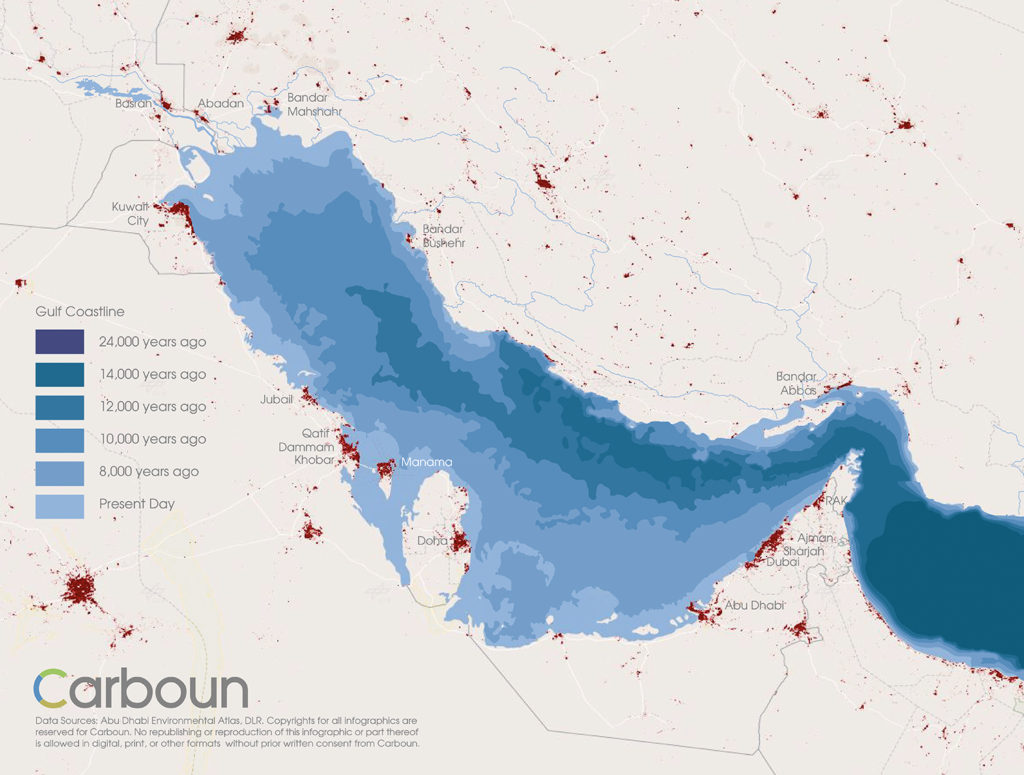Karim Elgendy
As the last ice age ended, the earth’s climate began to warm up, glaciers and ice sheets started to melt, and sea levels rose globally. With sea levels rising, seawater (once again) flooded into the Gulf (also known as the Persian Gulf or Arabia Gulf), whose sea floor was exposed for millennia and covered in sand dunes (except for lakes and the Tigris-Euphrates river meandering across it towards the Arabian sea).

Sea levels rose by 125 meters until they peaked 1 – 2 meters above today’s levels, 4,000–5,000 years ago. They then dropped to the present levels and settled for the last 2500 years.
But since the beginning of the 20th century the world witnessed a new type of sea level rise, driven by Climate Change caused by human activity. Seas rose by 0.16-0.21 meters between 1900-2016 and are set to rise much faster if current trends continue. Naturally, the low-lying coastal areas around the Gulf are at risk again. The only difference being that we have now built cities and infrastructure on them.
To protect these investments and communities living there, we must mitigate further climate change by cutting our Carbon Emissions enough to meet the 1.5 degree target.
Cities of the region must also collaborate to develop a pan-regional comprehensive resilience strategy that protects their built environment, their infrastructure, and the future of the next generations who would like to call this region home.
The maps used within the infographic do not imply an expression of any opinion whatsoever on the part of the Carboun initiative concerning the legal status of any country, territory, city or area or of its authorities, or concerning the delimitation of its frontiers or boundaries.
Copyrights for all infographics are reserved for Carboun. No republishing or reproduction of this infographic or part thereof is allowed in digital, print, or other formats without prior written consent from Carboun.
To discuss this infographic, please join Carboun’s discussion group on Linkedin. For news and updates on sustainability from around the region, follow Carboun’s Twitter feed.
